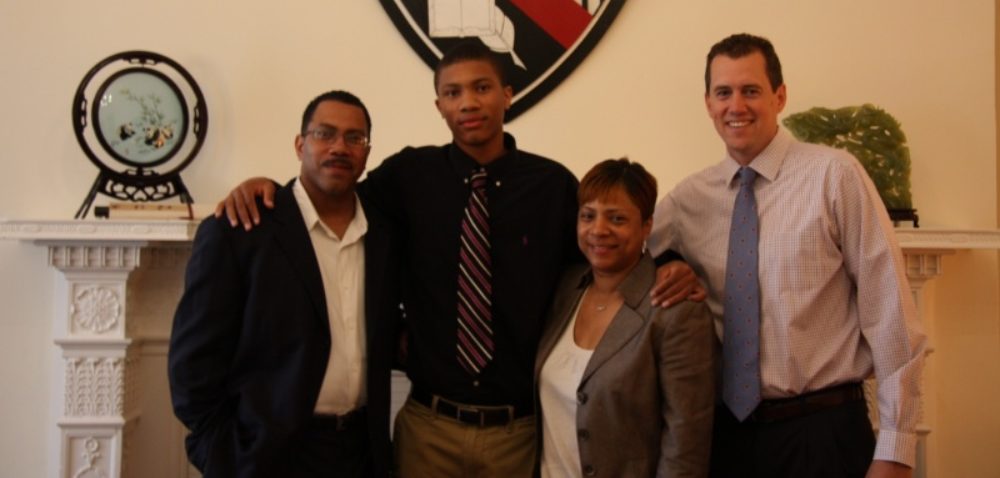There’s a perception that Ivy League men’s basketball players, while talented, are on the low end of the athleticism scale among D1 basketball players. It’s often said that prospects with marginal D1 athletic ability “might be able to play at the Ivy level”. There’s also the old inference that non-scholarship schools can’t reasonably expect to recruit the same level of talent as scholarship schools, so they have to settle for less athletic kids.
Here are eight recent examples, including six from this year, that will probably surprise most people. All eight players started and/or contributed significantly at schools and in leagues most perceive to have more athletic players and higher levels of ball. Seven of the eight are graduate transfers, having used up their Ivy academic eligibility before their athletic eligibility (the Ivys don’t allow redshirting). They opted to transfer in order to play their final year instead of doing what some, including Columbia’s all-Ivy selection Alex Rosenberg, have done and withdraw from school for a year.
- Cancer, Galal. Cornell / Kent State University. 6’2″, 185 lbs. Graduate Student. Cancer played in every game, averaging 25 minutes per game for a 19-13 Mid-American Conference team. He was not an all-Ivy selection, although some of his teammates were.
- Cressler, Nolan. Cornell / Vanderbilt. 6’4″, 210 lbs. Redshirt Junior. Vanderbilt is a member of the SEC, where Cressler plays regularly against teams like Kentucky, Florida, LSU etc. He’s the 7th man, playing 14 minutes/game on a team that made the NCAA tournament. At Cornell, he played two years and was honorable mention all-Ivy after averaging 17 pts, 4 rebounds and 2 assists his sophomore year.
- Koon, Denton. Princeton / Hofstra University. 6’8″, 210 lbs. Graduate student. Koon has started every game for Hofstra, averaging 35 minutes per game along with 12 points and 7 rebounds for a team that’s 18-8 overall and second in the Colonial Athletic Association. He did not make any all-Ivy teams last year, although two of his Princeton teammates did.
- Maia, Rafael. Brown / University of Pittsburgh. 6’9″, 245 lbs. Graduate student. Pitt is in the ACC, by any accounting one of the top few leagues in the country. Maia has started 17 out of 25 games for an 18-7 ACC team that goes to the tournament almost every year. He was honorable mention all-Ivy 2015, while one of his Brown teammates was second team all-Ivy.
- Miller, Shonn. Cornell / University of Connecticut. 6’7″, 220 lbs. Graduate student. UConn, formerly of the Big East and now in the AAC, has won 4 national championships in the last 18 years. Miller has started every game while leading the team in scoring and is second in rebounding. He was a 1st team all-Ivy selection.
- Mitola, Alex. Dartmouth / George Washington University. 5’11”, 170 lbs. Graduate student. Alex plays about 15 minutes a game for one of the top teams in the Atlantic-10, a conference that regularly puts 3-4 teams in the NCAA tournament. At one point this year GW was ranked in the Top 25. A second team all-Ivy pick, as was one of his teammates, Alex was known as athletically limited by Ivy standards, yet here he is, a key part of a very good team in a very athletic league.
- Peck, Errick. Cornell / Purdue University. 6’6″, 225 lbs. Graduate student, 2013-2014. Peck played 19 minutes per game for Purdue, a team that plays in the Big 10, a league that has seven teams in the NCAA tournament this year. He was an honorable mention all-Ivy selection as a Cornell senior, averaging 10 pts., 5 rebs and 2 assists, while starting 11 out of 29 games.
- Tarwater, Dwight. Cornell / University of California at Berkeley. 6’6″, 230 lbs. Graduate student, 2014-2015. Cal plays in the PAC-12, a league that just put seven teams in the NCAA tournament, tying it for most of any conference this year. Tarwater played in all 33 games for Cal, starting 13. At Cornell, he was not a starter until his senior year, on what were some deep and talented teams. Yet they never finished above .500 in the league, or even close to it overall. He was never an all-Ivy selection at Cornell, although some of his teammates were.
The major roles being played on successful teams by all of these former Ivy athletes eliminates any possible arguments that they are just sitting on the bench on more athletic teams or getting playing time for really bad teams. Size and/or position can also be eliminated as factors, as these players cover the range of size (5’11” to 6’9″) and position (guard to center). Finally, if measured by all-Ivy honors, only 1-2 of these eight were even the best players on their own Ivy League team. Clearly, athleticism in Ivy League men’s basketball is much better than many give it credit for.
Aside from proving the perception of low Ivy League athleticism is false, these examples also raise an interesting question. Is the league hurting itself by forcing nearly all of these players to leave when they still have NCAA eligibility? On the surface, certainly. Is the rule obsolete? Maybe. Would they have left anyway? Is this year is an anomaly? Perhaps. But in this country where we’ve completely lost our perspective when it comes to sports, there’s plenty to be said for the dog still wagging the tail in the Ivys, and not the other way around, as at most schools. On the other hand, even the Ivys have adjusted with the times every once in a while. Their recent addition of a post season tournament is a good example.
Finally, as five of the eight are from Cornell alone, you’ve got to feel for recently fired Cornell coach Bill Courtney, who must have felt like the basketball gods were not on his side. Who could blame him if he occasionally wondered what might have been.

